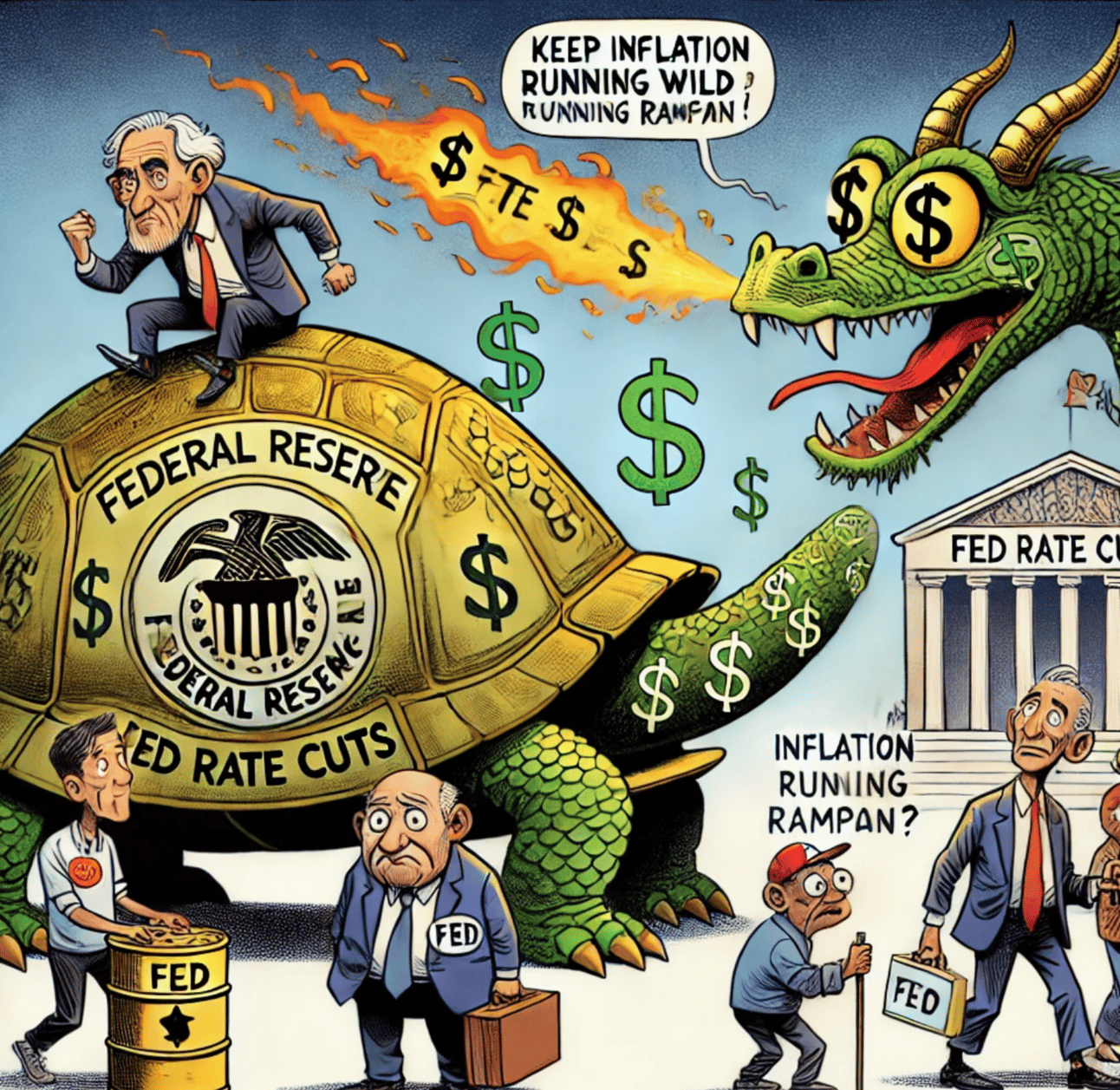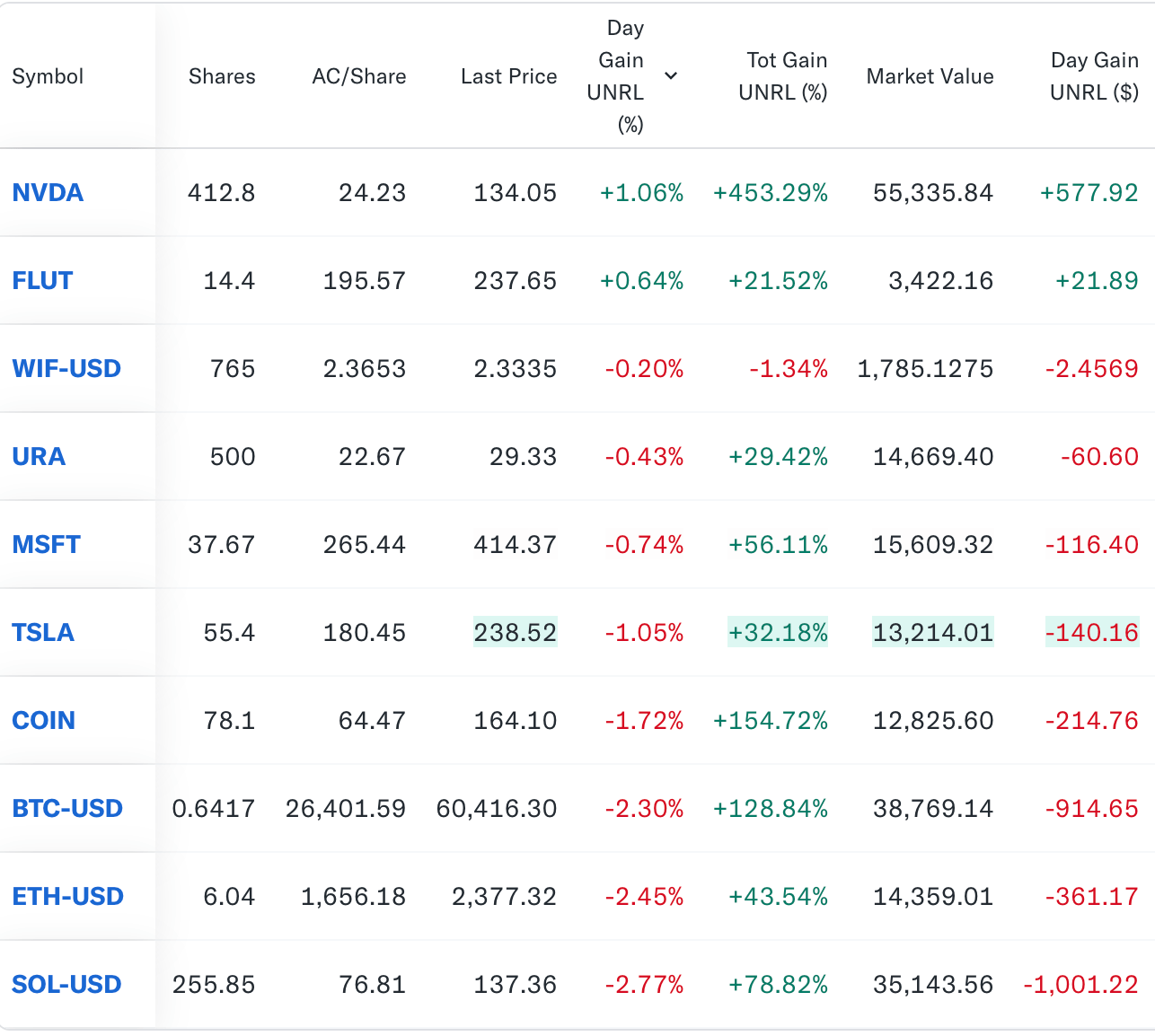- The BRRR
- Posts
- ⏸️ CPI Report Puts Rally On Pause
⏸️ CPI Report Puts Rally On Pause
PLUS: China Firms Up $70B Lending Facility
TheBRRR’s Thoughts
GM.
Today’s CPI report further entrenches the Fed’s next policy move, as a 0.25% rate cut is all but guaranteed in November. While inflation ticked higher in September, the Fed has committed to supporting the labor market in the face of widespread weakness this year, only revealed via dramatic revisions to initial data releases.
Stock indexes continue to seesaw around all-time highs while large cap crypto assets continue to underperform.
It doesn’t look like we’ll get a dramatic move until after the US election, unfortunately. While a Trump win would represent a more constructive backdrop for risk assets, we expect a post-election rally regardless of the outcome as the uncertainty itself is eliminated.
Core CPI Lands 0.1% Higher Than Expected

Synopsis:
Inflation rose unexpectedly in September 2024 on the heels of the Federal Reserve's recent rate cut. Core CPI rose 0.3% month-over-month, surpassing the 0.2% forecast, while headline CPI also printed above expectations at 2.4% year-over-year.
Wall Street analysts were quick to respond, highlighting persistent price increases in auto insurance, medical services, and food, which contributed to the hotter inflation print. The Fed's hopes for disinflation are being challenged, as inflation remains entrenched in key sectors, despite easing in rent inflation.
The Details:
Core CPI: Increased 0.3% month-over-month, surpassing expectations of 0.2%, with a year-over-year rise of 3.3%.
Headline CPI: Rose 0.2% month-over-month (vs. 0.1% expected) and 2.4% year-over-year, still the lowest since February 2021.
SuperCore CPI: Jumped 4.6% year-over-year, driven by spikes in auto insurance (up 56% since the Biden administration began) and medical care.
Food Inflation: All major grocery categories saw price increases, with meats, poultry, fish, and eggs up 0.8%, and eggs jumping 8.4%.
Market Reaction: Wall Street’s consensus acknowledges that inflation isn’t dead, and analysts warn that disinflation progress is slow. Core goods prices have stalled, and while rent is cooling, services inflation remains sticky.
WHY IT MATTERS:
For traders, this inflationary trend signals that the Fed’s monetary easing might be slower than anticipated. The stubborn rise in services prices—particularly in volatile areas like medical care and auto insurance—means inflation will continue to pressure consumers and businesses. Market expectations for aggressive Fed rate cuts could be misplaced, increasing the risk of volatility in rate-sensitive sectors like tech and real estate. However, with slower shelter inflation, housing may face some relief, offering a glimpse of potential moderation.
Bullet Points:
Core CPI: +0.3% MoM, higher than 0.2% expected.
Auto Insurance: Up 56% since Biden took office.
Egg Prices: Soared 8.4% in September.
Fed Rate Cuts: Slower disinflation means gradual, smaller cuts expected, despite market hopes for aggressive easing.
Macro Theme Connection:
This inflation report underscores the broader U.S. economic challenge of managing disinflation amid volatile price spikes in essential sectors. The Fed’s response to this entrenched inflation will be critical in navigating between recession risks and price stability. Expect slower rate cuts, with continued pressure on real wages and consumer spending in the months ahead.
China Firms Up Details On New $70B Lending Facility

Synopsis:
China's central bank, the People’s Bank of China (PBOC), unveiled a new US$70.7 billion swap facility aimed at boosting liquidity in its stock market. The move allows qualified securities, mutual funds, and insurance companies to swap government bonds or central bank bills for corporate bonds or stock exchange-traded funds as collateral. This comes amid market volatility and increasing speculation about a larger government stimulus package. Despite this, the swap tool is designed to enhance liquidity without directly increasing the money supply.
The Details:
Swap Facility Size: Initial size is 500 billion yuan (US$70.7 billion), with the potential for expansion.
Participants: Qualified securities, mutual funds, and insurance companies can swap government bonds or central bank bills for corporate bonds or ETFs.
Objective: Enhance stock market liquidity without expanding the money supply, as the central bank is legally prohibited from lending to non-banking institutions.
Market Reaction: The Shanghai and Shenzhen markets saw a slight uptick following the announcement, with the CSI300 index rising 0.6%, and the Hang Seng Index in Hong Kong gaining 1.98%.
Background: This swap tool was introduced as part of broader policies aimed at stimulating the world's second-largest economy, which includes mortgage rate cuts and a reserve requirement ratio reduction.
WHY IT MATTERS:
This swap tool signals that China is focused on stabilizing its volatile stock market while avoiding outright monetary expansion, a fine line as economic growth falters. For global traders, this move indicates that China may be taking steps to shore up its capital markets, potentially providing support to equities in the near term. However, the limited scope of the tool—restricted to non-banking institutions—suggests that further, more aggressive stimulus measures may be necessary to address deeper structural economic issues.
Macro Theme Connection:
China's targeted swap facility reflects a cautious approach to managing its slowing economy, aiming to support financial markets without triggering inflation. While this tool temporarily enhances liquidity, it underscores China's reluctance to fully embrace aggressive monetary policy, contrasting with Western central banks that frequently expand their balance sheets in crisis situations.
If you're frustrated by one-sided reporting, our 5-minute newsletter is the missing piece. We sift through 100+ sources to bring you comprehensive, unbiased news—free from political agendas. Stay informed with factual coverage on the topics that matter.
Premium Subscriber Section

You’ll need to upgrade your subscription to view our portfolio and get our real-time trade alerts. You can upgrade for $3/month or $14.99/year.
Trades, Watchlist & Live Portfolio
(paywall only)
Most Recently Revealed Trade:
Wednesday April 17 2024: We bought more Solana at $131 and added Solana’s top memecoin WIF at $2.36 on the heels of a leverage wipeout dip after the WW3 scare.

Here’s the link to The BRRR Technical Analysis Chatbot - let me know what you think!
Portfolio Notes
June 12: These assets all look great for continuation higher.
We are considering moving on from Tesla as it has lagged the rest of our portfolio badly and doesn’t have an obvious catalyst. We’ll monitor and let you know if we decide to move on.

Older Notes
Wednesday, April 3, 2024: We haven’t deployed the cash yet, but are eyeing exposure to a few assets including META and PLTR.
Monday, March 11, 2024: We sold Apple this morning. The newsletter held the stock from inception a year ago for a meager 12% gain.
The company has lost its magic evident by complacent iPhone releases, lack of a coherent vision for AI integration and punitive & anti-competitive App Store policies.
We believe the stock will move in-line with the broader Nasdaq going forward.
We’ll sit on the cash for now, but plan to redeploy it quickly.
Watchlist
$META: Sleeper in AI race and ad biz is proving resilient
How was today's email? |
Got feedback? Follow the writer on Twitter @frank_locascio and send a message.
The BRRR is meant for informational purposes only. It is not investment advice. Please consult with your investment, tax, or legal advisor before making any investment decisions.ll


Reply